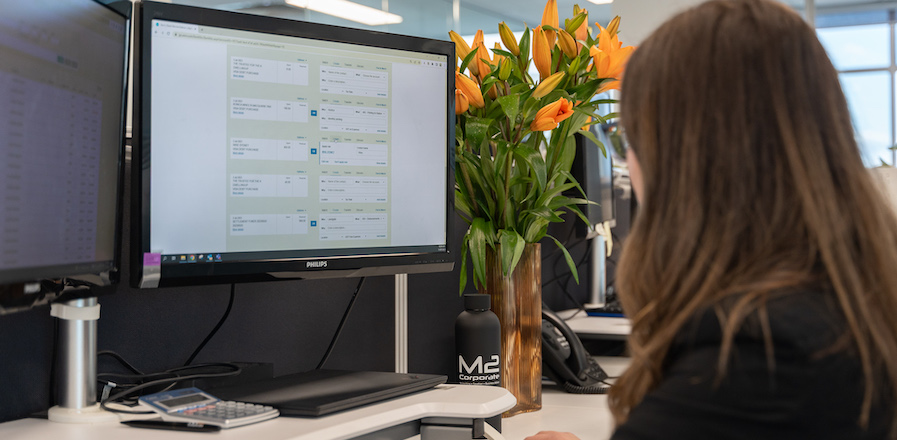Is Accounts Receivable a Liability or Asset on Your Balance Sheet?

Are accounts receivable a liability or asset in Australia? The simple answer is that they’re considered current assets.
As a seasoned bookkeeper, I know how vital these assets are for ensuring liquidity and fostering growth.
In this blog, I’ll explain why and how these entries on your balance sheet are crucial to your bookkeeping practices.
Quick Summary
- Accounts receivable are amounts owed to a company by its customers for goods or services delivered but not yet paid for.
- Accounts receivable are classified as assets because they represent future cash inflows that the company expects to receive.
- They are considered current assets since they are typically converted into cash within a year, crucial for maintaining liquidity.
- While not physically tangible, accounts receivable are tangible in financial terms due to their measurable and expected economic benefit.
- The ageing of receivables process categorises receivables based on how long they have been outstanding, helping manage and prioritise collections.
- Proper management of accounts receivable enhances cash flow, reduces credit risk, and allows for better strategic resource allocation.
What Exactly Are Accounts Receivable?
Accounts receivable represent the money owed to a business by its customers for goods or services that have been delivered but not yet paid for. Essentially, when a company makes a sale on credit, it generates an account receivable.
This common practice boosts sales by offering customers flexible payment options.
Is Accounts Receivable an Asset, and Why?
Indeed, accounts receivable are considered a current asset because they are expected to be converted into cash within one fiscal year or operating cycle, whichever is longer.
The conversion of accounts receivable into cash is crucial, significantly influencing a company’s ability to fund operations, invest in new opportunities, and distribute dividends.
Why Are Accounts Receivable Classified as an Asset?
Accounts receivable are classified as an asset because they represent a future economic benefit—the cash that the business will eventually receive from its customers.
By definition, assets are resources owned by a company that provide future economic benefits, thus categorising accounts receivable within this group.
How Do Accounts Receivable Differ From Liabilities, or Equity?
Accounts receivable, as a type of asset, are distinct from other financial categories:
- Assets: Unlike fixed assets such as machinery or buildings, accounts receivable are current assets expected to be converted into cash quickly.
- Liabilities: Contrary to liabilities, which are what a company owes to others, accounts receivable are what others owe to the company.
- Equity: Equity signifies the owner’s stake in the company. Accounts receivable influence equity indirectly as they are collected and converted into cash.
Why Is Net Accounts Receivable Considered a Current Asset?
Net accounts receivable are regarded as a current asset because they represent the actual cash amount expected to be received.
This figure is reached by deducting allowances for doubtful accounts from the gross accounts receivable, offering a more accurate estimate of collectable amounts.
Are Accounts Receivable Considered Tangible Assets?
No, accounts receivable are not tangible assets.
Tangible assets, which include items like inventory and equipment, are physical.
In contrast, accounts receivable are intangible, symbolising a legal right to future monetary receipts.
What Is Ageing of Accounts Receivables, and How Does It Work?
The ageing of accounts receivables is a method used to categorise receivables based on the duration they have been outstanding.
Typically, this process segments receivables into periods such as 0-30 days, 31-60 days, and beyond.
This helps businesses identify overdue payments and assessing the risk of non-payment.
What Does an Ageing Report Indicate?
An ageing report offers a comprehensive view of the health of a company’s receivables.
It highlights the effectiveness of the company’s credit and collection policies and underscores potential cash flow issues before they escalate.
Moreover, it assists businesses in prioritising their collection efforts to enhance cash flow.
FAQs
What is the difference between accounts receivable and accounts payable?
Accounts receivable are amounts owed to a company by its customers, whereas accounts payable are amounts a company owes to its suppliers or creditors. Accounts receivable represent incoming cash, while accounts payable represent outgoing cash.
How do accounts receivable impact a company’s financial statements?
Accounts receivable appear as current assets on a company’s balance sheet. They also affect the income statement through revenue recognition and the potential for bad debt expenses if not collected.
How much does a bookkeeper cost?
We charge anywhere from $300 to $1000 per month depending on business size and requirements.
For more information, review our blog on how much bookkeepers cost.
Conclusion
In summary, accounts receivable are current assets essential for keeping your business operational and on a growth trajectory.
Managing accounts receivable effectively can profoundly influence a business’s financial health. It ensures a steady cash inflow, minimises the risk of bad debts, and refines financial forecasting accuracy.
If you need help optimising your bookkeeping processes, my team and I are here to ensure your accounts receivable are managed effectively to support your business’s ongoing success.